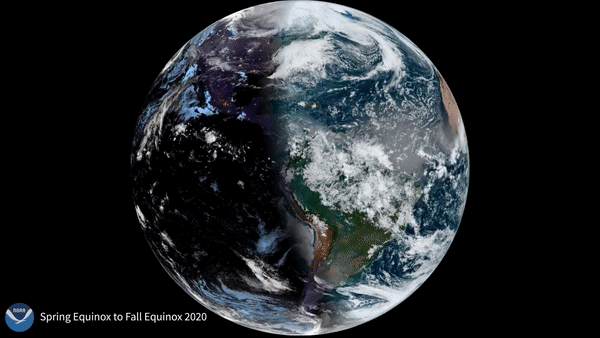
It’s officially autumn in the Northern Hemisphere—the season when days get shorter as that half of the world heads toward winter. Meanwhile in the Southern Hemisphere, spring has begun!
This year, the Autumnal Equinox—the official start of the astronomical season—was Tuesday, Sept. 22, 2020 at 9:30 a.m. EDT. However, the first day of fall can range from Sept. 21 through Sept. 24. This date signifies the start of the astronomical season , since during the equinox (Latin for “equal night”), the sun is located directly above the Earth’s equator. This causes day and night to be roughly equal in length at all latitudes.
They aren’tcompletelyequal however. According to NOAA’s National Weather Service , our atmosphere refracts the sun’s light, which causes the sun to appear above the horizon before it actually rises and delays the sunset until after it has actually set.
The GOES-East geostationary satellite, also known as GOES-16, keeps watch over most of North America, including the continental United States and Mexico, as well as Central and South America, the Caribbean, and the Atlantic Ocean to the west coast of Africa. The satellite's high-resolution imagery provides optimal viewing of severe weather events, including thunderstorms, tropical storms, and hurricanes.